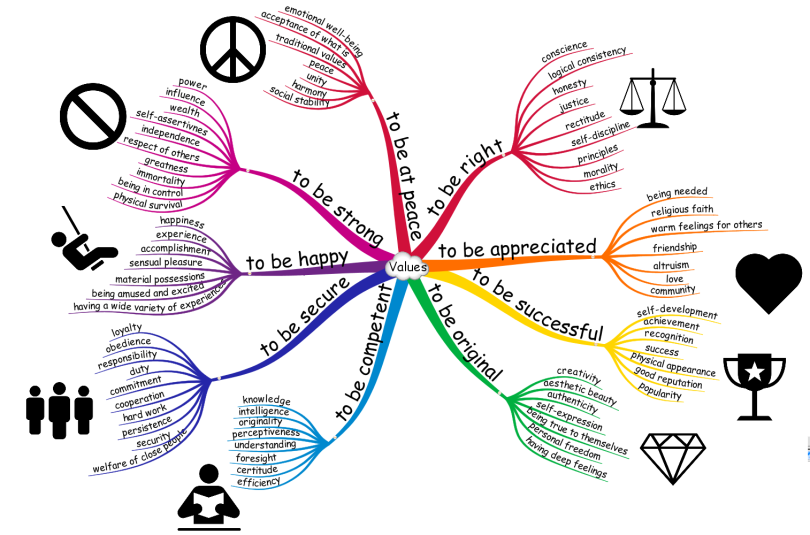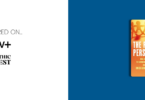Because there is a good chance each author and reader of this website is a junkie of the MBTI and personality in general, why not spare a little time to investigate another personality indicator, less known, maybe more difficult to understand, but equally worthy of notice ; the Enneagram.
Few people find any interest in the combination of the two models. Most of them use either the MBTI, or the Enneagram, but they don’t always think of connecting them both. But being put together, one can find further confirmation of one’s own personality as if both of the typologies reunited could allow to consider the material point more thoroughly. Some of the most famous Enneagram specialists have done so, and many say there are obvious correlations between the two typologies.
To sum up the argument, the Enneagram is a personality model whose origins are in ancient Sufi traditions. It is represented in the form of a figure on which nine points are placed, representing as many profiles. These 9 points are themselves divided into three distinct “centers” :
The emotional center with points 2, 3 and 4
The mental center, with points 5, 6 and 7
And the instinctive center, with points 8, 9 and 1
At first glance, not many similarities with the MBTI typology. However, the latter is also divided into four specific lines of conduct (I/E, S/N, F/T, P/D). The difference lies in what each model can classify and recognize. The MBTI mainly focuses on behaviors. The selection mode “either/or” leaves little doubt. Whether you are introverted or extroverted, sensitive or intuitive, you have your place, so there are chances that you succeed in recognizing yourself.
However, the Enneagram proposes to go further, and will use much stronger words such as “suffering”, “injury”… to describe each type. In fact, the Enneagram takes for granted that each person builds himself up considering some wound suffered in early youth, – some dissatisfied or thwarted desire, and that they can alter their deportment in order to learn how to live with it. The Enneagram invites each person to dive as often as possible into distant memories and to study his inner sufferings, rather than focus on their preferences and behaviors of everyday life. Recognizing your inner motivations, often stemming from an unresolved problem or anchored in oneself is, in a certain way, a little trickier and implies further research.
So how to recognize one’s Enneagram type when one knows one’s MBTI type?
The easiest way is to study all the characteristics of each of the 9 Enneagram types and to see which are the most congruent with your personality. For example, if you are an ISFJ, you might recognize yourself in type 2. The ISFJ is often described as the “nurturer”, which rather corresponds to the behavior of a type 2; giving love and help, listening to people…
Here in particular, the S preference corresponds to the need of providing material assistance to the other, and the F letter in this type is easily understood by the emotional response that triggers the need for love of the 2. We can conclude that types 2 are often people with an MBTI made of the SF association (Sensory-Feeling). However, you may as well be an extrovert; it is even commoner for 2s. So, you’ll be ESFJ, ESFP or ENFJ in the most usual cases.
Statistically, it is obvious that some MBTI types are more easily recognizable in the Enneagram; the example of the INTP and the type 5 is the best known. Ease in knowledge acquisition joins the « mad scientist » side of the INTP, particularly with the T which focuses on the logical aspect of events. A taste for solitude, an intuitive mind always looking for new opportunities… ; these characteristics are to be found in the INP temperament ( iNtuition – perception) . The INTJ type is also possible.
Let’s take another example ; if you came to read the description of type 8 (« The Challenger ») and you think “yes! it’s me ! “, you are likely to be an ESTJ/ENTJ. It is more than likely that a type 8 is an extrovert (E). His ability to thump the table, this kind of strength aura and power rather corresponds to a taste for extraversion. Although it is more likely that a type 8 usually works with a largely sensitive side (S), it can also be more intuitive (N). However, there is little doubt on the preference for thinking (T). A type 8 generally dislikes the outpouring of feelings and doesn’t readily accept them when seen in other people.
Finally, 8s are relatively “flexible”, and they often plan their future actions, enjoying the idea that they keep control over their life. That being said, it turns the scales towards the ESTJ/ENTJ.
Of course, not all ESTJs are 8s, and vice versa. It is based here on statistics ; they allow us to identify general trends precisely.
Also, and it must be remembered, associations of each Enneagram type with those of the MBTI are often mere indications. There are MBTI types which correspond to all types of the Enneagram, and even the most unlikely combinations, such as a type 7 INFP do exist among 7 billion people present on Earth.
The most important thing is to remember it would be a pity, when studying personality, to ignore one of the two models described above. The MBTI and Enneagram ultimately are complementary. Using them in a combination can greatly help a person to reach a higher degree of self-understanding. In fact, the combination of the MBTI and Enneagram is nothing but a new way to succeed in having a deeper knowledge of ourselves and to better understand our strength and weakness.
In short, do not be afraid of facing one or the other separately; take them together straightway!








Great article! Now I want to see how other types relate to the enneagram!
I appreciate very much your article. The link between the Enneagram and the MBTI is new for me. Thanks a lot !
I really value your article. The connection between the Enneagram and the MBTI is a new insight for me. Thanks a bunch!